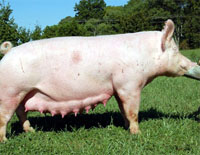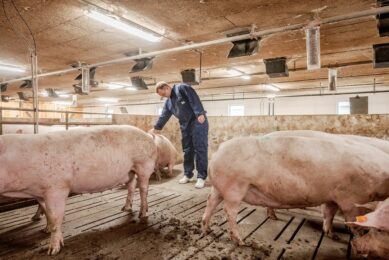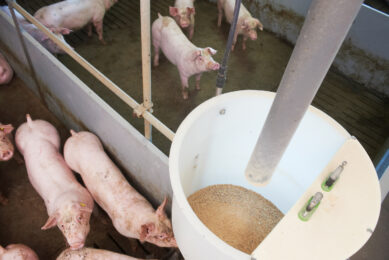Aarhus Uni feeding model can help improve sow milk production

Scientists from Aarhus University’s Research Centre Foulum have developed a pig model that can provide answers to how pregnant and lactating sows should be fed to improve their milk production.
The model, which is the first of its kind in the world, is expected to provide knowledge that makes it possible to reduce piglet mortality.
Increasing litter sizes
Pig breeding in recent years has resulted in increasing litter sizes. However, large litters have also given rise to problems with high piglet mortality. One of the reasons is that the sow does not produce enough colostrum. Therefore, many neonatal piglets die of hunger hours after birth. If it were possible to get the sow to produce more colostrum, then more piglets would survive.
The physiological factors that affect milk production are very complex. More needs to be learned about how to feed sows optimally in relation to promoting production of the colostrum which is so important for piglet survival.
The model the Aarhus University scientists developed allows them to investigate the factors influencing milk yield more accurately. The way the model works is that catheters are operated into selected sows. This permits the scientists to extract samples from several different locations in the sow’s body. The catheters are operated into the sows approximately one and a half months before expected farrowing thus permitting the scientists to investigate sow metabolism during pregnancy and lactation.
Metabolism
With the aid of the model the scientists can study how nutrients are metabolised in the various organs and how the individual nutrients are metabolised to milk production. In other words, they can measure what happens to each nutrient inside the sow. The model will provide new insight into the mechanisms that control the distribution and application of the nutrients in the sow. This is the first time ever that this kind of investigation is being carried out.
“To begin with we will study nutrient metabolism in the liver,” said Peter Theil, senior scientist, Department of Animal Science at Aarhus University, and the leader of the project.
“The liver is particularly interesting because it metabolises many nutrients and to a great degree coordinates nutrient use in the rest of the animal. The liver makes nutrients from the intestine available to the udder and is thus one of the regulators of milk production,” he explained.
Feeding strategies
The model permits the scientists to observe how different feeding strategies affect the production of colostrum and milk. There are several indications that present feeding strategies do not consider colostrum production well enough. The scientists expect that the pig model will provide knowledge to enable improvement of feeding during lactation.
When all is said and done, Theil expects the new model to provide knowledge that can improve pig production in general by, among others things, reducing piglet mortality.
Since pigs are similar to humans physiologically speaking, he also expects that the model can provide knowledge that can be used in connection with birth and breast-feeding.
Related websites:
• Aarhus University











